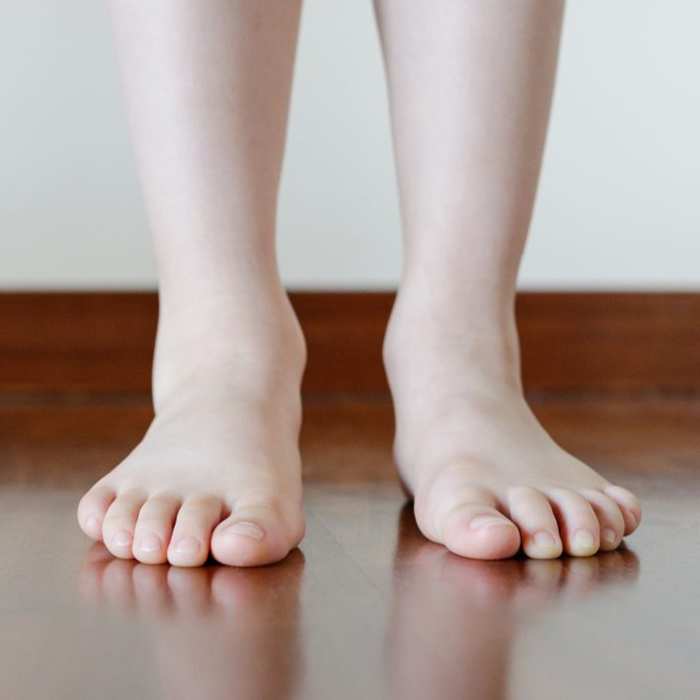Paediatric orthopaedics
From infancy to adulthood, there is a strong emphasis on the proper development of the musculoskeletal system, as this is the stage in life is where most congenital or acquired musculoskeletal disorders can be fully and effectively corrected.
This is when the bones are built, ossification takes place, which gives the body’s skeletal system, therefore, early detection and healing will prevent musculoskeletal problems in adulthood. The task of paediatric orthopaedics is the timely recognition and effective treatment of lesions of these motoric and supporting organs, bones, joints, vertebrae, muscles and the soft parts around them.
Changes related to lesions in the musculoskeletal system and growth are very rarely accompanied by pain, therefore the parents have a particularly important role to play when it comes to recognition. It is important that they know and notice in time the warning signs that indicate a musculoskeletal problem, and that the child is involved in all mandatory screening tests. Our trained paediatric orthopaedists, after a thorough examination, provide the parent with useful advice in addition to the most appropriate therapy.

In case of which complaints is it worth visiting a paediatric orthopaedist?
If your child has any of the following abnormalities or dysfunctions, you and your child should visit a paediatric orthopaedic clinic:
- cervical muscle stiffness
- abnormal posture
- abnormal foot posture
- plantar pain
- narrowed range of motion of hands and feet
- infants if they do not turn or start climbing for a long time
- sideway curvature of the spine (scoliosis)
- humpback, protruding abdomen
- back and/or lower back pain
What are the most common orthopaedic complaints of children?
During a child’s development, each stage of development has orthopaedic problems specific to that age. These need special attention in terms of prevention as well as effective treatment.
Infancy
From 0 to 6 months of age, the hip and foot posture are closely monitored by a specialist during mandatory screening tests. The child undergoes the first orthopaedic examination a few days after birth. The next mandatory screening at 6 weeks of age is hip screening, during which the congenital hip dislocation is screened. This examination is especially important, because if the baby’s femur slides in the articular cavity, special external tools can be used to correct and repair the hip joint and prevent the formation of hip dislocation. This does not put any pressure on the baby as its legs are positioned as in the womb. Hip ultrasound is also performed during the examination, which safely screens this lesion.
During the screening test, the paediatric orthopaedist will also check any foot deformities, such as an inward-turning foot or a club-foot. At this age, these changes can also be fully corrected. Thanks to the treatments started in time, by the time the baby stands up or starts to walk, a healthy limb structure will develop.
Babyhood
This period starts from the beginning of walking, at about 8-10 months of age. At this stage of development, special attention should be paid to foot problems. Our prepared orthopaedist can also deduce possible diseases of the musculoskeletal system from the general gait and movement of the child.

Elementary school age
At the age of 6-11, the paediatric orthopaedist pays special attention to foot deformities (flatfoot), axial abnormalities of the lower and upper limbs (bow legs and knock knees), differences in limb length, early types of scoliosis, hip and knee diseases.
Adolescence
In adolescence (11–14 years), spinal problems are the most common: scoliosis, bad posture, Scheuermann’s disease. It is important to know that scoliosis recognized in time can be effectively corrected at this age. Typical complaints in adolescence also include various ossification disorders as well as chest deformities (funnel chest, pigeon chest).

What happens during a paediatric orthopaedic examination?
The course of a paediatric orthopaedic examination depends on whether the small patient arrives for a screening examination or with a specific complaint.
In both cases, the examination begins with the recording of the musculoskeletal history. This allows the orthopaedist to track the development of the musculoskeletal organs in the context of growth throughout childhood. The specialist asks the parent in detail about the circumstances of the birth, previous treatments, events, possible accidents, and surgical interventions.
This is followed by a physical examination: in case of a screening examination, the specialist checks the shape and function of the soles, gait, posture, chest, spine and joints, as well as the reflexes. In case of a specific complaint, after the physical examination of the given area, the doctor can also order special diagnostic examinations (MRI, CT, X-ray, ultrasound, laboratory tests) to establish the diagnosis.
At what age are orthopaedic screenings recommended?
Once again, we would like to emphasize the importance of regular orthopaedic screenings in childhood, as various musculoskeletal complaints can still be corrected at this age, preventing problems in adulthood.
The first orthopaedic examination is done a few days after birth, and the first mandatory screening is at 6 weeks of age. In addition to the general examination, hip dislocation is also screened at this time. It is then recommended to visit the paediatric orthopaedics again at 4 months of age, when the baby is already turning to their side and lifting their head.
The next examination is recommended 3-4 months after the child starts to walk, and then at the ages of 3 and 6 years, before starting kindergarten and school. Orthopaedic screening is again recommended at the age of 10 and 14 at school age.
Because the child can develop a lot during the time between mandatory and recommended tests, we recommend that you pay attention to the warning signs listed above that may indicate a musculoskeletal problem.
What treatment options are available?
Treatments during paediatric orthopaedic practice usually take longer, especially when it comes to skeletal disorders (e.g. scoliosis, bad posture). During the treatment process, the specialist may use medications, special aids (insoles, special shoes, corsets), physiotherapy and electrotherapy. It is important that the developing musculoskeletal system is active so that it can strengthen and develop, so regular exercise, regardless of the recommended therapy, is highly suggested. In case of recommended movement therapy, the child, together with an orthopaedic physiotherapist, make a personalized treatment plan that is good for their illness and suits their living conditions.
During the treatment, the paediatric orthopaedist will stand by the parent throughout, provide them with advice, monitor the child’s development and the therapy.

